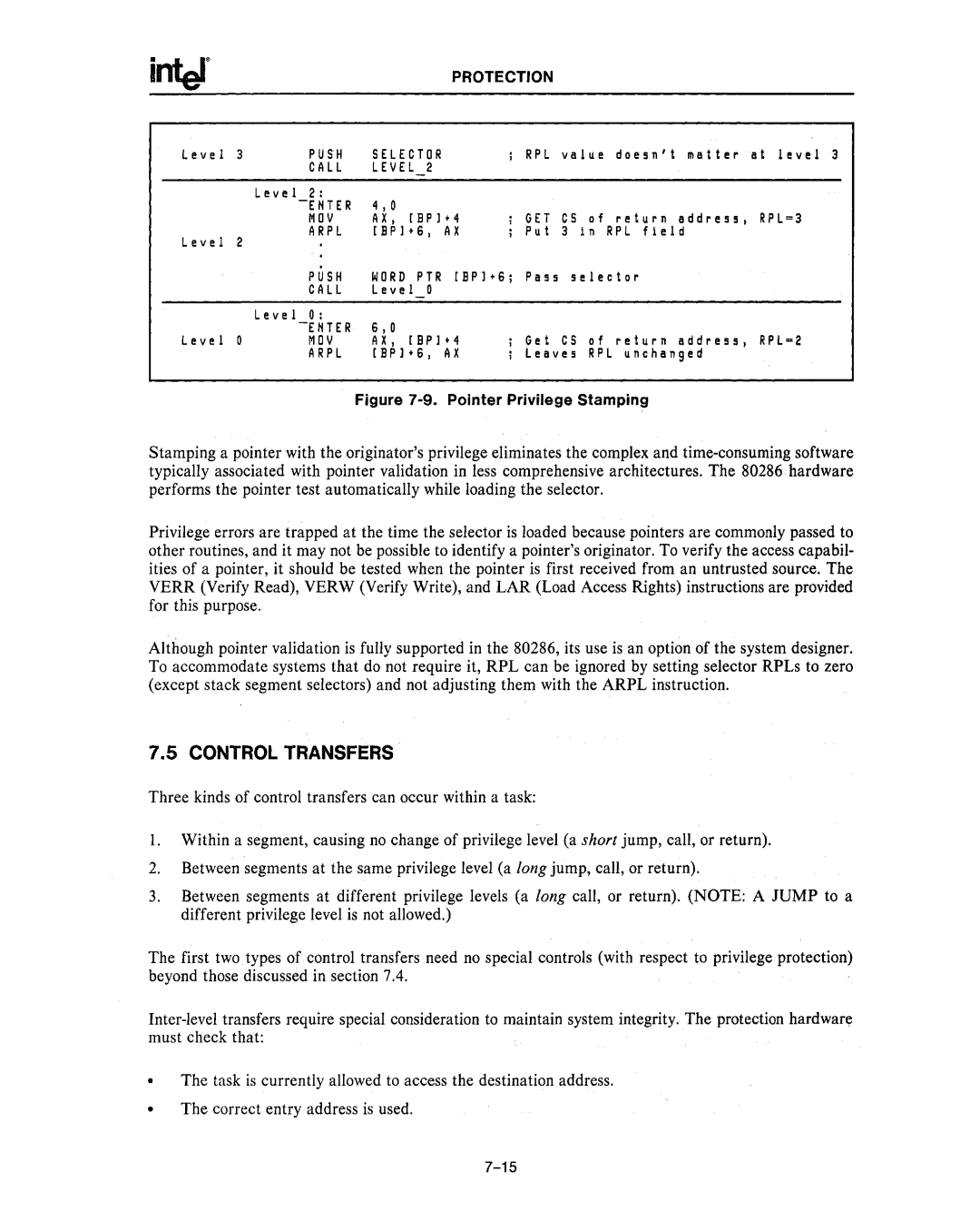
PROTECTION
Level | 3 | PUSH | SELECTOR |
| RPL value doesn't matter at level 3 | ||
|
| CALL | LEVEL | 2 |
|
| |
| Level | 2: |
|
|
|
|
|
|
|
| 4 , 0 | [BPJ+4 | GET CS of return address, RPL=3 | ||
|
| MOV | AX, | ||||
Level | 2 | ARPL | [BPJ+6, | AX | Put 3 in RPL field | ||
|
|
|
|
|
| ||
|
| PUSH | WORD PTR [BPJ+6j Pass selector | ||||
|
| CALL | Level | 0 |
|
| |
| Level | 0: |
|
|
|
|
|
Level | 0 | 6,0 | [BPJ+4 | Get CS of return address, RPL=2 | |||
MOV | AX, | ||||||
|
| ARPL | [BPJ+6, | AX | Leaves RPL unchanged | ||
Figure 7-9. Pointer Privilege Stamping
Stamping a pointer with the originator's privilege eliminates the complex and
Privilege errors are trapped at the time the selector is loaded because pointers are commonly passed to other routines, and it may not be possible to identify a pointer's originator. To verify the access capabil- ities of a pointer, it should be tested when the pointer is first received from an untrusted source. The VERR (Verify Read), VERW (Verify Write), and LAR (Load Access Rights) instructions are provided for this purpose.
Although pointer validation is fully supported in the 80286, its use is an option of the system designer. To accommodate systems that do not require it, RPL can be ignored by setting selector RPLs to zero (except stack segment selectors) and not adjusting them with the ARPL instruction.
7.5 CONTROL TRANSFERS
Three kinds of control transfers can occur within a task:
1.Within a segment, causing no change of privilege level (a short jump, call, or return).
2.Between segments at the same privilege level (a long jump, call, or return).
3.Between segments at different privilege levels (a long call, or return). (NOTE: A JUMP to a different privilege level is not allowed.)
The first two types of control transfers need no special controls (with respect to privilege protection) beyond those discussed in section 7.4.
The task is currently allowed to access the destination address.
The correct entry address is used.
